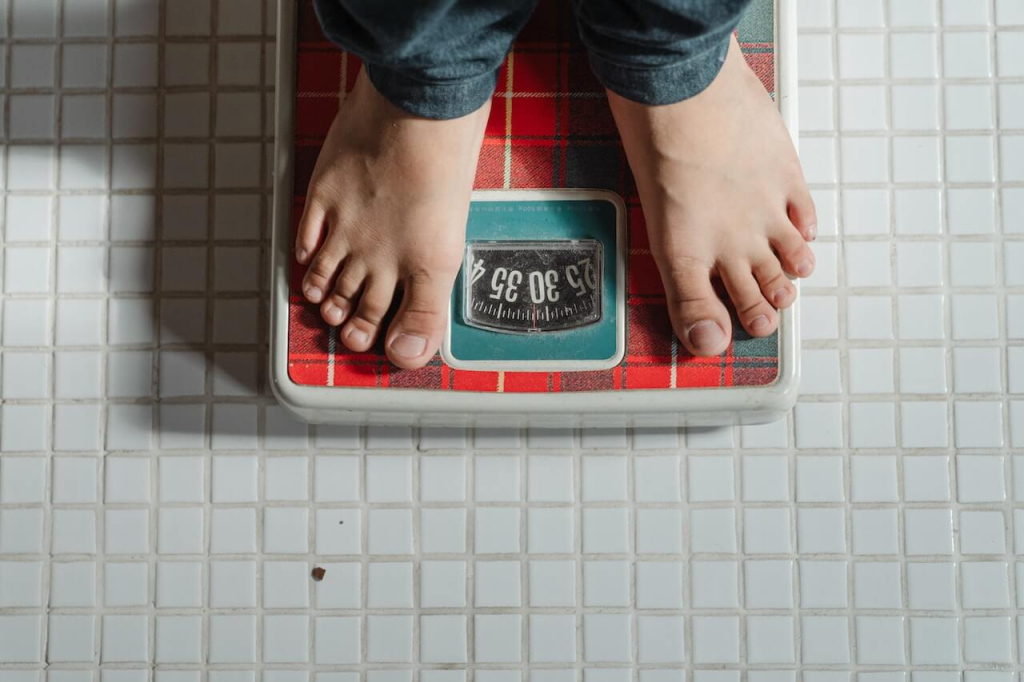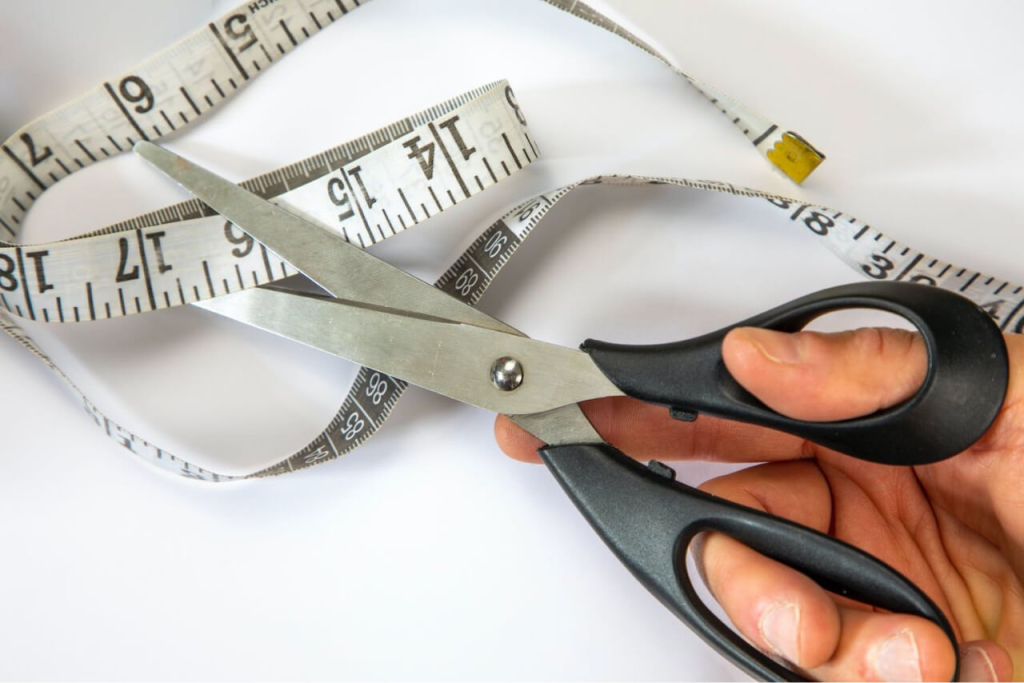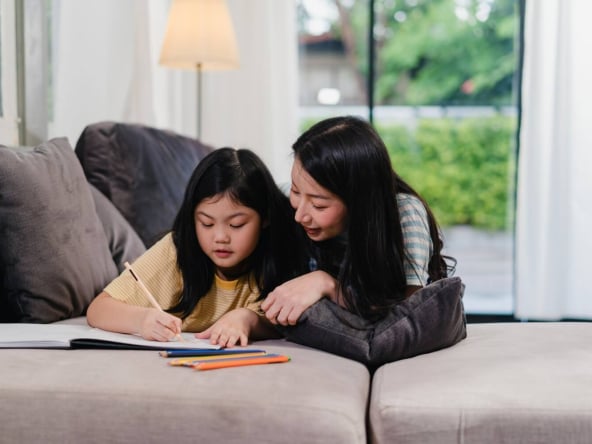Everyone should feel comfortable about themselves no matter how their body looks—this is what body positivity is at its core. In a world where celebrity-like physical features are marketed like prescriptions, it is easy to get lost and worry about your own body image, specially with young people. But with the body positivity movement gaining traction in the mainstream and with the effort of a community, there is hope to change the climate to be inclusive for people regardless of body type.

Conversations around body weight
In the Philippines, a family celebration almost always comes with crunchy lumpia, juicy lechon, and your annoying relative remarking how you look like you have gained weight over the holidays. Though these are meant as lighthearted, they may not land the same on the other person.
Furthermore, these comments are often indications of a much deeper societal problem. To a degree, family gatherings are microcosms that reflect how our culture views people, regardless socioeconomic status, who weigh heavier than an average TV supermodel. But this is not just a problem for the Philippines alone. In the Western hemisphere, body shaming is becoming a cultural epidemic.
Though they may be just simple comments, body shaming, and especially fat shaming, is a form of harassment. Regardless of the concern, shaming people is not the way to make people adopt healthier practices. In fact, shaming may even make people sicker.
Fat shaming, specially with young people, can cause a lot of mental health issues that affect physical health. Body dissatisfaction may lead to eating disorders, increased body image concerns, depression, negative emotions, and poor self esteem.
This and other similar stories are the reason for the body positivity movement.

The body positivity movement
The body-positive movement initially emerged as a response to the pervasive body shaming and unrealistic beauty standards that the media portrays.
Back in 1969, the National Association to Advance Fat Acceptance was founded by fat activists to change the conversation around body weight and shift them to healthier attitude towards practicing body positivity and over-all self care Now, the body positivity movement champions acceptance and also encourages individuals to feel positive about their bodies, no matter their size.
At its core, the movement’s goal is to dismantle the notion that certain body types are more desirable. Beyond this, body positivity is a mindset that promotes the acceptance and appreciation of all body types. This is in response to society’s beauty standards that seem to narrow as years go by. From a historical standpoint, it is a leap from the fat acceptance movement that started around the 1960s.
The modern body positivity movement owes its recent traction to the rise of social media and the increased visibility of people advocating for it — providing more body positive messages.
Now, more outspoken celebrities and prominent people usher in a safe space online where anyone can share their stories and experiences that affirm body acceptance.
Challenges to the body positivity movement
Many movements have challenges, and the body positivity movement is not exempt from this. With the growing popularity of body-positive messaging, opposing movements have also co-opted its name for marketing. This “toxic body positivity” subverts the original philosophy of the movement and converts it into another tool to promote an unattainable body image.
Ultimately, they are the total opposite of the body positivity movement and further promote harmful norms surrounding beauty and worth.
Positive body image vs. negative body image
Positive and negative body image are two contrasting ways how an individual looks at themselves. Below are their distinctions:
Body positivity
When someone has a positive body image, they look at their physical self in a healthy and constructive way. This means they are comfortable and satisfied with their body and its unique characteristics. In other words, they feel good about themselves regardless of their weight or their form.
To build a safe space for a positive body image, one must actively challenge societal beauty standards. In addition, they must focus on self-acceptance and foster a supportive environment that celebrates body diversity.
Generally, people with a positive body image feel more confident, have high self-esteem, and feel good about their bodies.
Negative body image
Conversely, a person with a negative body image feels distorted and critical about their appearance. They may either feel dissatisfied, uncomfortable and even ashamed of their bodies. This body dissatisfaction also results in poor self-esteem, negative emotions, creates mental health problems, and preoccupation with these perceived flaws.
To overcome this feeling, an individual must challenge unrealistic beauty standards, be more self-compassionate, maintain healthy body image, and seek professional help when they need to.
In summary, the feeling toward one’s body can impact how one perceives themselves and affect their self-esteem. By embracing body positivity, a person can learn to transform their negative emotions towards their physical appearance into something more compassionate.
This way, they can learn how to counter the harmful effects of negative body image.
Body neutrality movement
Aside from negative and positive viewpoints, another significant perspective is the body neutrality movement. While negative and positive body images differ in how they adhere to or protest unrealistic beauty standards, body neutrality removes the focus on the body altogether.
Essentially, body neutrality recognizes that a person’s worth is not determined by their appearance. In this sense, it supports the body positivity movement. However, others argue that this may also negatively affect the body positivity movement as it diverts the energy away from challenging societal norms.
At the end of the day, it is important to recognize and respect the diversity of these approaches. Provided that they support the broader goal of promoting body acceptance and well-being for all individuals.
Why is body positivity important?
The body positivity movement aims to improve a person’s overall well-being, self-perception, and mental health. Its goal is not to change physical appearances but to give a new perspective on how people see themselves so that they develop a healthier relationship with their own bodies, thereby having better self esteem.
Instead of focusing on aesthetics, body positivity encourages people to recognize their body’s strengths, abilities, and functionality. By adopting a healthy body image, people learn to value themselves better beyond society’s narrow beauty standards.
Ultimately, body positivity empowers people and ushers in self-acceptance, which then improves their mental health and overall well-being.
How to promote body positivity in the community?
Inspiring critical thought and promoting body positivity on a community level requires a collective effort. Through this, we can create an environment that values and celebrates diverse body types and body shapes. As such, here are some strategies to promote body positivity within a community:
Awareness and education
Getting people aboard the body-positive movement starts with awareness and education. The means need not be complicated as this could be as simple as holding workshops, seminars, educational sessions, or other events. These gatherings serve as a platform where one can provide resources and information about the issue and start a more inclusive mindset.
Create groups for open dialogues
Start the conversation about body positivity and create groups for open dialogue. Ensure that the space is safe and non-judgemental so that individuals can feel more comfortable about sharing their experiences. Lastly, empathize, understand, and provide support to community members.
Set an example
Have influential and respected people in the community champion the cause. It is also important that these leaders practice what they preach through their language and actions. Additionally, they may also share their personal stories about self-acceptance and body confidence to inspire others in the community.
Promote positive messaging
Engage in digital platforms and spread awareness in social media, community newsletters, and other channels. Share positive body image messages, empowering stories, and other uplifting content.
This encourages the community members to share what they are going through and foster a sense of belongingness.
Ultimately, loving yourself no matter your physical features should not be a radical act but a norm. With a broader acceptance of body diversity, the world can be a kinder place for everybody regardless of how they look.
Creating a safe and welcoming community
We create the environment that we live in. If you want a welcoming and safe space, you must also be willing to put in the effort to keep it as such for every single member of the community without discrimination.
In the end, we all want to come home to a place where we feel most welcome and accepted. More importantly, you deserve a space where you can improve your overall mental health and lifestyle. Within these safe communities, you can thrive and grow to your full potential.
Come home to a community where you and your family feel most safe, secure, and empowered.

